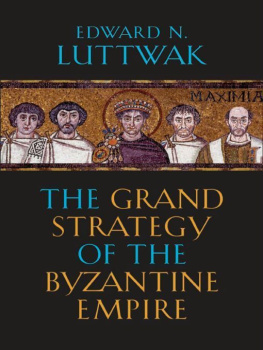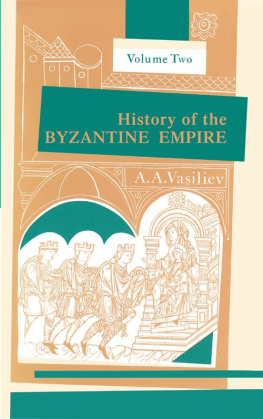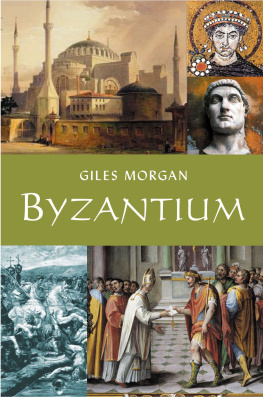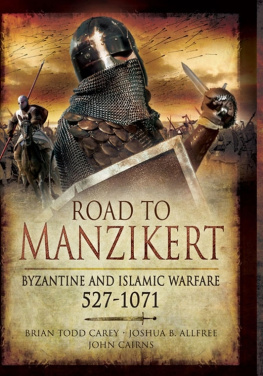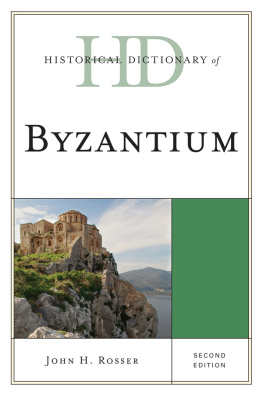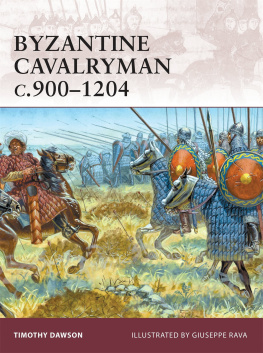The Late Byzantine Army

The Late
Byzantine Army
Arms and Society, 12041453
Mark C. Bartusis

THE MIDDLE AGES SERIES.
Ruth Mazo Karras, General Editor
Edward Peters, Founding Editor
A complete list of books in the series is available from the publisher.
Publication of this book was supported by a grant from Northern State University
Copyright 1992 University of Pennsylvania Press
All rights reserved
Printed in the United States of America on acid-free paper
First paperback printing 1997
10 9 8 7 6 5 4 3 2 1
Published by
University of Pennsylvania Press
Philadelphia, Pennsylvania 19104-6097
Library of Congress Cataloging-in-Publication Data
Bartusis, Mark C.
The late Byzantine army : arms and society, 12041453 / Mark C. Bartusis.
p. cm. (Middle Ages series)
Includes bibliographical references and index.
ISBN 0-8122-1620-2 (alk. paper)
1. Byzantine EmpireArmy. I. Title. II. Series.
U43.B9B37 1992
355.009495dc 20
9214823
CIP
Frontispiece. Battle between Alexander the Great and the Persian shah Darius. In large measure the attire and weapons of the ancient combatants reflect late Byzantine fashion. Miniature painting from the Alexander Romance, early or mid-fourteenth century. Library of S. Giorgio di Greci, Venice, fol. 61v (photo: Istituto Ellenico di Studi Bizantini e Postbizantini di Venezia).
To my parents
Contents
MAPS
FIGURES
.
.
.
.
.
.
.
TABLES
.
.
The research and writing of this book were conducted over a ten-year period, during which time I was the recipient of material support from several institutions and organizations, and of advice and assistance from numerous individuals, to whom I wish to express my gratitude. A Gennadeion Fellowship in Post-Classical Studies at the American School of Classical Studies at Athens, an International Research and Exchanges Board Fellowship to the Philosophy Faculty of the University of Belgrade, and Dumbarton Oaks Junior and Summer Fellowships afforded me the opportunity to utilize research facilities, which otherwise would have been impossible. The hospitality of the American Research Institute in Turkey and release time from Northern State University were appreciated. In addition, the librarians of Dumbarton Oaks, the Gennadeion Library in Athens and Northern State University were most helpful in facilitating my work.
A number of individuals have read parts of the book while it was in draft and/or provided valuable advice during the course of my work: Professors Alexander Kazhdan, Boidar Ferjani, Stephen Reinert, and Khalifa Bennasser. To these I offer my thanks. Dr. Mirjana ivojinovi of the Byzantine Institute of the Serbian Academy of Sciences and Arts deserves special mention for introducing me to the Slavic sources and for providing counsel generously and enthusiastically during my stay in Belgrade.
Byzantine Greek is a nightmare to transliterate. In the interest of standardization, I have transliterated almost all Greek (as well as Slavic and Turkish) technical terms and names of people and places according to the form in which they appear in the Oxford Dictionary of Byzantium (1991), the editors of which have adopted a system for Greek that uses a modified letter-for-letter approach (a for alpha, b for beta) but employs common English forms wherever they are well established (Constantine rather than Konstantinos). Nevertheless, there are a few cases in which I depart from their schema. For example, I use kavallarios (as it was pronounced) instead of the ODBs kaballarios.
Even though Byzantine Greek sounded much like modern Greek, scholars sometimes pronounce it as if it were ancient Greek or some mixture of ancient and modern. The ODB system of transliteration, while it has the virtue of simplicity and is rather faithful to the spelling of Greek, is quite misleading in regard to pronunciation. Consequently, and with no claim to be doing justice to the complexities of the medieval Greek language, I provide a few general rules here to help the reader approximate the late Byzantine pronunciations of the strange names and terms that appear in this book.
i, oi, and the final e are all pronounced as ee in tree
-es at the end of words (Metochites, Maroules) is pronounced as eece in Greece, except in plural forms (tzangratores, posotetes), where it is pronounced as ess in less
au and eu are respectively pronounced af and ef
b is pronounced v except in the names Berilas and Syrbanos, and in foreign words such as bey and Bayezid
ch is pronounced as in the Scottish loch or German nach
d is pronounced as th in then
g between two vowels is pronounced as the y in mayor
h at the beginning of a word is silent
rh is pronounced as r
Finally, in Slavic words, c is pronounced ts, and are pronounced ch, dj is pronounced as the j in judge, j is pronounced as the y in yellow, is pronounced sh, and is pronounced zh as in measure and vision.
Dates
The Byzantine year began on September 1. A few dates are cited in the form 1267/8, which signifies the period from September 1, 1267, to August 31, 1268.
Akropolites | Georgii Acropolitae Opera, ed. A. Heisenberg, vol. 1. Leipzig, 1903. |
Angold, Byzantine Government | M. Angold. A Byzantine Government in Exile: Government and Society Under the Laskarids of Nicaea (12041261). London, 1975. |
Byz | Byzantion: revue internationale des tudes byzantines. Brussels, 1924ff. |
BZ | Byzantinische Zeitschrift. Leipzig, Munich, 1892ff. |
CFHB | Corpus Fontium Historiae Byzantinae. |
CSHB | Corpus Scriptorum Historiae Byzantinae, 50 vols. Bonn, 182897. |
DOP | Dumbarton Oaks Papers. Washington, D.C., 1941ff. |
Doukas | Ducas. Istoria Turco-Bizantina (13411462), ed. V. Grecu. Bucharest, 1958. |
Geanakoplos, Emperor Michael | D. Geanakoplos. The Emperor Michael Palaeologus and the West, 12581282: A Study in Byzantino-Latin Relations. Cambridge, Mass., 1959. |
Gregoras | Nicephori Gregorae Byzantina Historia, ed. L. Schopen, 3 vols., CSHB. Bonn, 1829, 1830, 1855. |
JB(G) | Jahrbuch der sterreichischen Byzantinistik (byzantinischen Gesellschaft). Vienna, 1961ff. |
Kantakouzenos | Ioannis Cantacuzeni eximperatoris historiarum libri IV, 3 vols.: vol. 1, ed. L. Schopen; vols. 23, ed. B. Niehbuhr, CSHB. Bonn, 1828, 1831, 1832. |
Laiou, |
Next page


